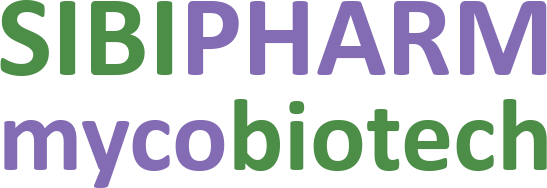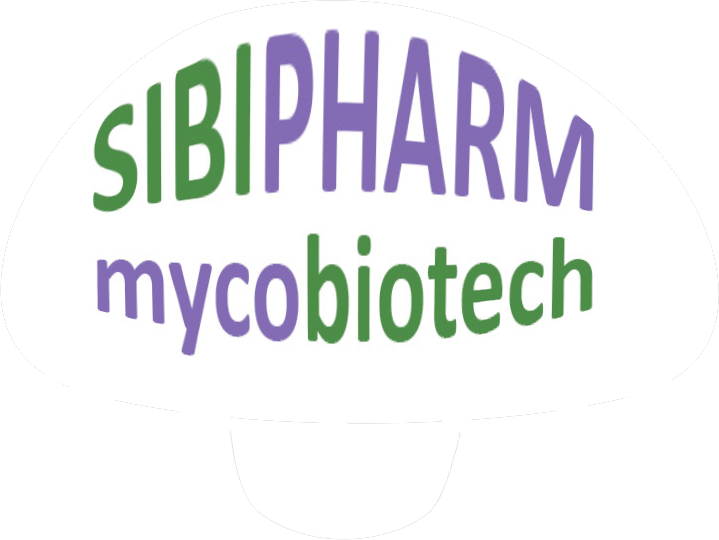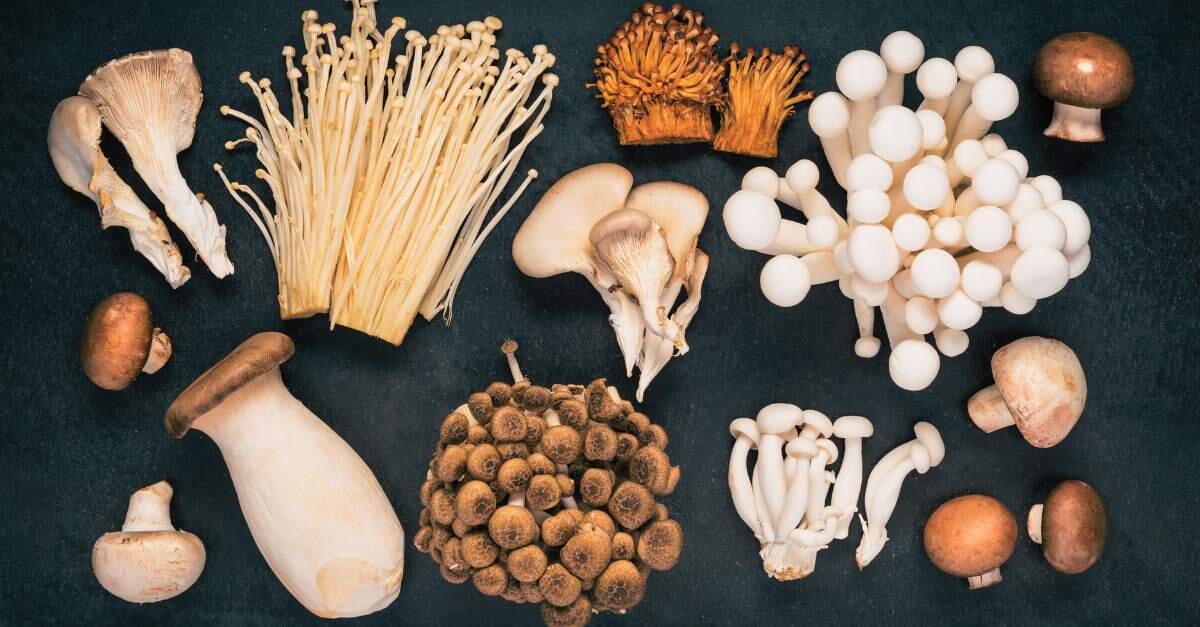Medicinal plants have been traditionally used for many thousands of years for treatment and as a source of most biologically active substances, and therefore such herbal medicines form an important part of traditional and evidence-based medicine throughout the world. The widespread use of functional mushrooms as medicines was limited to Asian countries for a very long time. Until now, medicinal mushrooms were mainly used as dietary supplements or functional foods. However, the practice of using functional mushrooms is growing every year in Western medicine, and medicinal mushrooms are becoming true representatives of traditional or evidence-based medicine.
Griseofulvin, penicillins, cyclosporines, ergoline derivatives, which are fungi, are widely used in clinical practice, despite the fact that higher basidiomycetes are a vast resource for obtaining biologically active compounds useful from a therapeutic point of view. Modern scientific research on medicinal mushrooms has expanded exponentially over the past two decades, and scientific studies show that fungal derivatives function in the human system. Even among the known species, the proportion of well-studied fungi is very small. The experience of ethnomedicinal use of mushrooms, the ecological need for mushrooms to produce bioactive secondary metabolites, and improved capabilities for genetic, pharmacological and chemical analysis allow us to assume that mushrooms have great potential for successful implementation in clinical practice.
The most important species of medicinal mushrooms are Inonotus obliquus, Ganoderma lucidum, Coriolus versicolor, Lentinula edodes, Agaricus brasiliensis, Cordyceps militaris, Grifola frondosa, Hericium erinaceus and some others. Due to the wide traditional use of these representatives, extensive information is available on in vitro activity, modes of action and effects in animal assays. However, there is also a lack of studies investigating the structure-activity relationship, possible toxicological risks when using mushrooms and their metabolites, clinical trials, quality criteria, and established methods for their control.
Mushroom beta-glucans are the most powerful natural immunomodulators.
Glucan and polysaccharides obtained from mushrooms exhibit immunomodulatory activity. The ability of these compounds to enhance or suppress the immune response depends on a number of factors, such as dosage, route of administration, time and frequency of administration, and mechanism of action. Research has shown that some mushroom metabolites enhance innate and acquired immunity. In particular, they activate many types of immune cells: cytotoxic macrophages, monocytes, neutrophils, natural killer cells, dendritic cells and chemical messengers, interleukins, interferon, colony-stimulating factors that trigger complement reactions. They can also be considered as multicytokine inducers capable of inducing gene expression of various immunomodulatory cytokines and cytokine receptors. Lymphocytes that regulate antibody production (β cells) and cell-mediated cytotoxicity (T cells) are also stimulated.
The main advantages of using bioactive compounds of mushrooms are:
-Most medicinal mushrooms are artificially grown, which ensures correct identification. The ability to grow mushrooms under controlled conditions with subsequent improvement of product purity is an important criterion in the development trend of medicinal mushrooms;
-Mushrooms have vegetative reproduction, so the mycelium can be stored for a long time, and the genetic and biochemical sequence can be verified over time.
Antibacterial and antimicrobial activity of functional mushrooms.
Fungi need antibacterial and antifungal compounds to survive in their natural environment. It is therefore not surprising that antimicrobial compounds with more or less strong activity can be isolated from many mushrooms and that they can be useful for humans. However, only compounds from microscopic fungi have been available on the market as antibiotics so far.
Fungi have antimicrobial activity due to the biologically active substances they contain. Applanoxylic acid A (2a), isolated from Ganoderma annulare (Fr.) Gilbn., exhibits weak antifungal activity against Trichophyton mentagrophytes. Steroids such as 5a-ergosta-7,22-dien-3b-ol (3) or 5,8-epidioxy-5a, 8a-ergosta-6,22-dien-3b-ol (4), isolated from Ganoderma applanatum (Pers.), have been shown to be weakly active against a number of Gram-positive and Gram-negative microorganisms. Oxalic acid is one of the agents responsible for the antimicrobial effect of Lentinula edodes (Berk.) Pegler against S. aureus and other bacteria. Ethanol micelles from L. Edodes exhibit antiprotozoal activity against Paramecium caudatum. The antimicrobial activity of Podaxis pistillaris (L.: Pers.) Morse, used in parts of Yemen for the treatment of diaper rash in children and in South Africa against sunburn, is due to epicorasins. These factors belong to the group of epipolythiopiperazine-2,5-diones, an important class of biologically active fungal metabolites.
Of particular interest are compounds exhibiting activity against multiresistant bacterial strains. New sesquiterpenoid hydroquinones, called ganomycins, have been produced from the European Ganoderma species Ganoderma pfeifferi Bres., which inhibit the growth of methicillin-resistant Staphylococcus aureus and other bacteria. In addition, metabolites of this mushroom have been found to inhibit the growth of microorganisms responsible for skin problems (Pityrosporum ovale, Staphylococcus epidermidis, Propionibacterium acnes).
Antitumor activity of mushrooms.
Oncology is one of the leading causes of mortality due to diseases. Experience of Asian and Eastern European countries shows that mushrooms can play an important role in cancer prevention and treatment. Mushrooms contain a huge source of new powerful biopharmaceutical compounds. Antitumor activity is achieved due to polysaccharide and polysaccharide-protein metabolites of mushrooms by stimulating the body’s defense mechanisms. The fruiting bodies of mushrooms contain various bioactive compounds, in particular beta-glucans; they have beta-linkages (from 1 to> 3) in the main glucan chain and additional beta-branching points (from 1 to> 6), which are necessary for their biological action. Glucans with high molecular weight are more effective than glucans with low molecular weight. The drugs activate effector cells such as macrophages, T lymphocytes and NK cells to secrete cytokines TNF-a, IFN-g, IL-1b etc. which are antiproliferative. They induce apoptosis and differentiation in tumor cells. There is evidence that b-d-glucans induce a biological response by binding to membrane complement receptor type 3 (CR3, alpha-Mb2 integrin or CD11b/CD18) on immune effector cells.
Ganoderic acids are a class of triterpenes found in Ganoderma (reishi) mushrooms. Ganoderic A and B acids have been found to have biological activities including hepatoprotection, antitumor effects and inhibition of 5-alpha reductase. The chemical composition of maitake mushrooms is dominated by alkali metals potassium, magnesium, calcium, riboflavin, ergocalciferol, niacin, fiber and amino acids. Beta-glucan, which is prevalent in mushrooms of the Polyporaceae family, has been isolated as a protein-binding polysaccharide compound for immune enhancement. Cancer prevention is one of the proposed uses of maitake mushroom metabolite. Maitake is thought to exert its effects through its ability to activate various effector cells such as macrophages, natural killer cells, T cells, interleukin-1 and superoxide anions, which have anti-cancer activity. Recent studies in New Zealand suggest that a combination of Reishi and Cordyceps metabolites had a beneficial effect on quality of life in some patients with advanced cancer. The researchers believe that the mixture of active ingredients from different mushrooms enhances the immune response by providing multiple stimuli to the body’s natural defenses. Cordyceps militaris enhances cellular immunity, has anoxic radical scavenging capacity, and supports cellular bioenergetic systems.
Chemical modification is performed to improve the biological selectivity and activity of the polysaccharides and their clinical properties by making them water soluble. The main procedures used for modification are oxidation-reduction hydrolysis, formolysis, and carboxymethylation. Most clinical data on immunostimulatory activity have been obtained for the polysaccharides lentinan, krestin, and schizophyllan, but polysaccharides from some other promising medicinal mushrooms have also shown good results. Mushroom polysaccharides prevent tumorigenesis, exhibit direct antitumor activity against various allogeneic and syngeneic tumors, and are believed to prevent tumor metastasis. Mushroom polysaccharides do not act directly on cancer cells but exert antitumor activity by activating various immune responses in patients. The antitumor activity of polysaccharides requires an intact T-cell component; their activity is mediated by a thymus-dependent immune mechanism. The practical use of mushrooms depends not only on biological properties but also on biotechnological availability. Piptoporus betulinus has been traditionally used in Bohemia for the treatment of colorectal cancer and stomach disorders. It is also known as the “ice man” mushroom, which was discovered in 1991 during archaeological excavations in the remains of a Bronze Age man who wore P. betulinus fruiting bodies attached to his clothing during his journey through the Alps. In Eastern Europe, I. obliquus fruiting bodies have been used as a folk remedy for cancer and stomach disorders since the 16th or 17th century. Triterpenes and ergosterol peroxides also contribute to the anticancer activity. The melanin complex of I. obliquus has a high antioxidant and gene-protective effect on peroxidase-catalyzed oxidation of aminodiphenyls.
Lentinan from L. edodes, schizophyllan from S. commune, MD fraction from Grifola frondosa, polysaccharide peptide and polysaccharide-K obtained from the mycelium of Trametes versicolor have successfully passed I, II, III clinical trials in the study of the treatment of gastric, esophageal, nasopharyngeal, colon, rectal and lung cancer.
Polysaccharide-K suppresses immunosuppression associated with surgery and long-term chemotherapy. These metabolites are used as an adjunct to standard treatments such as surgery, radiation therapy and chemotherapy.
The use of lentinan (parenteral 0.5–1.0 mg lentinan daily, intravenous) in addition to chemotherapy resulted in increased survival time, restoration of immunologic parameters, and improved quality of life in patients with gastric cancer, colon cancer, and other carcinomas compared with patients who received chemotherapy alone. In a randomized multicenter study of 89 patients with gastric cancer, the median survival time in the immunochemotherapy group (chemotherapy and lentinan 2 mg weekly intravenously) was 189 days and in the control group (chemotherapy alone) 109 days. In another study of patients with advanced colorectal cancer, the median survival time was 200 days in the lentinan group (2 mg weekly, 23 patients) and 94 days in the control group.
In a controlled randomized trial, 130 patients received schizophyllan intramuscularly 40 mg weekly from day 14, for a total of 1134 mg, in addition to mitomycin, after surgical resection of the entire tumor. The median survival at 5 years was 72.2% in the schizophyllan group and 61.9% in the control group (134 patients, chemotherapy alone). Schizophyllan did not affect survival time when tumor tissue could not be completely removed.
In a randomized controlled trial of 462 patients with colorectal cancer with curative resection, PSK was given orally for less than 3 years after mitomycin C (intravenously on the day of surgery and 1 day after) and 5-fluorouracil (orally for 5 months). An increase in the recurrence-free survival curve was found in the PSK group compared with the control group. A controlled clinical trial of polysaccharide peptide was conducted in 485 cancer patients, a control group of 211 patients with gastrointestinal and lung cancer. With the use of 3 g of polysaccharide peptide per day orally for 30 days, the side effects of conventional therapy (esophageal cancer: radiation therapy with Co 60 gamma rays, DT 65-70 Gy for 6-7 months) were significantly reduced. PSP increased the survival of patients with esophageal cancer by 11%.
The immunostimulatory effect of lentinan was also studied in patients with AIDS. In a phase II study, 107 HIV-positive patients were treated with didanosine (400 mg per day, every 6 weeks). Thereafter, 88 patients received an additional 2 mg of lentinan per week intravenously for 24-80 weeks, patients in the control group received only didanosine. In contrast to the control group, a significant increase in CD4þ cell count was observed after 38 weeks. A study was conducted to evaluate the efficacy of combinations of MD fraction and whole powder of G. frondosa in the treatment of patients aged 22 to 57 years with stage II–IV cancer.
Cancer regression or significant improvement in symptoms was observed in 58.3% of patients with liver cancer, 68.8% of patients with breast cancer, and 62.5% of patients with lung cancer. The study found that patients with leukemia, stomach cancer, and brain cancer experienced an improvement of 10–20%. MD fraction appears to inhibit cancer progression and primarily exerts its effect through stimulation of NK cell activity. None of these compounds exhibited any significant side effects.
Conclusion
The results of the analysis obtained during the structured study of the bibliographic databases of the peer-reviewed research literature allowed us to conclude that with the strategic improvement of screening and identification methods, mushrooms continue to be a potential resource for new drugs. Fungal metabolites have demonstrated a wide range of biological activities, which can address many important unmet medical needs. Clinical trial data from pharmaceutical companies that have acquired or licensed mushroom bioactive compounds for clinical research or trials were also reviewed. These results are important in view of the lack of chemotherapeutic agents for several forms of malignant cancer, namely: estrogen receptor negative human breast cancer, mesothelioma, acute lymphocytic leukemia, acute myeloid leukemia, Hodgkin’s lymphoma, and incurable astrocytoma. Thus, this study showed the prospects for the use of mushroom bioactive compounds in medicine.
Disclaimer: The information provided in this article is for educational and informational purposes only. It is not intended as a substitute for professional medical advice, diagnosis, or treatment. Always seek the advice of a physician or other qualified healthcare professional with any questions you may have regarding a medical condition.






